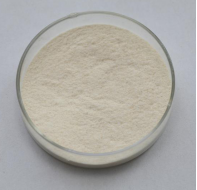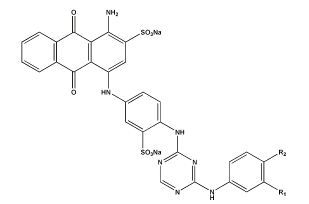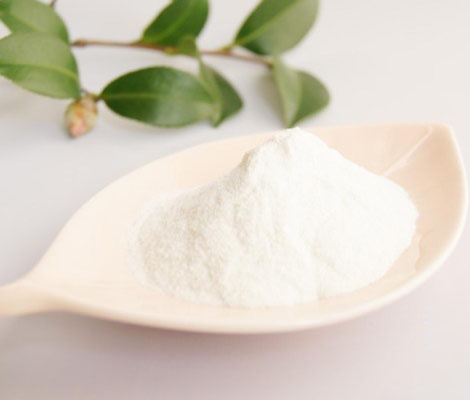Hot-selling attractive Konjac Gum Powder Factory in United Kingdom
Hot-selling attractive Konjac Gum Powder Factory in United Kingdom Detail:
[Latin Name] Amorphophallus konjac
[Plant Source] from China
[Specifications] Glucomannan85%-90%
[Appearance] White or cream-color powder
Plant Part Used:Root
[Particle size] 120 Mesh
[Loss on drying] ≤10.0%
[Heavy Metal] ≤10PPM
[Storage] Store in cool & dry area, keep away from the direct light and heat.
[Shelf life] 24 Months
[Package] Packed in paper-drums and two plastic-bags inside.
[Net weight] 25kgs/drum
[Introduction]
Konjac is a plant that is found in China, Japan and Indonesia. The plant is part of the genus Amorphophallus. Typically, it thrives in the warmer regions of Asia.
The extract of the Konjac root is referred to as Glucomannan. Glucomannan is a fiber-like substance traditionally used in food recipes, but now it is utilized as an alternative means of weight loss. Along with this benefit, konjac extract contains other benefits for the rest of the body as well.
The main material of the natural konjac gum is fresh konjac, which grow in virgin forest in Hubei area. We use advanced method to distill the KGM, aminophenol, Ca, Fe, Se which are good for health. Konjac is known as“ the seventh nutriment for human”.
Konjac Gum with its special water holiding capacity, stability, emulsibility, thickening property,suspension property and gel propery can especially adopted in food industry.
[Main Function]
1.It could reduce postprandial glycemia, blood cholesterol and blood pressure.
2.It could control appetite and reduce body weight.
3.It could increase insulin sensitivity.
4.It could control insulin resistant syndrome and diabetesII development.
5.It could reduce heart disease.
[Application]
1) Gelatinizer(jelly, pudding, Cheese, soft candy, jam );
2) Stabilizer(meat, beer);
3) Film Former(capsule, preservative)
4) Water-keeping agent( Baked Foodstuff );
5) Thickener (Konjac Noodles, Konjac Stick, Konjac Slice, Konjac Imitating Food stuff);
6) Adherence agent( Surimi );
7) Foam Stabilizer (ice cream, cream, beer)
Product detail pictures:

Related Product Guide:
Sticking to the perception of "Creating products of top of the range and earning mates with people today from all over the world", we constantly put the desire of consumers in the first place for Hot-selling attractive Konjac Gum Powder Factory in United Kingdom , The product will supply to all over the world, such as: Spain, Spain, Uruguay, We hope we can establish long-term cooperation with all of the customers. And hope we can improve competitiveness and achieve the win-win situation together with the customers. We sincerely welcome the customers from all over the world to contact us for anything you need!
CONTINUE WATCHING: https://goo.gl/H7O2Yg?49426
Get your hair loss treatment here ►►► https://endhairloss.eu
How To CombatCure Alopecia Hair Loss With Pumpkin Seed Oil
https://www.facebook.com/endhairloss.eu
https://twitter.com/endhairloss
https://plus.google.com/+endhairloss/posts
https://www.youtube.com/user/endhairloss
https://www.linkedin.com/profile/preview?vpa=pub&locale=i t_IT
https://www.pinterest.com/paolo8808/stop-hair-loss-naturally/
https://paolo8808.tumblr.com/
https://instagram.com/endhairloss/
https://www.dailymotion.com/giampaolo-floris
Hello, this is Daniel from Endhairloss.eu and in this short video I will tell you about the benefits that pumpkin seeds oil can have for the health of your hair.
These seeds are a good source of omega-6 acids and vitamins, especially E and K, and a recent Korean study has just found out that pumpkin seeds oil based supplements can actually support hair growth, and even help with cholesterol and blood pressure problems.
The Korean scientists who participated in this study, tested 76 young men who were suffering from light male pattern hair loss.
50 % of these men were given everyday about 400 mg of pumpkin seed oil while the rest got an inactive substance.
The scientists found that 44% of the people taking the oil improved a bit their hair growth, 51% didn’t get any improvements and only 2.7% lost more hair.
What happened to the other participants who got the inactive substance? Well, 28% of them lost more hair, 64% stayed the same and 7.7% increased their hair growth.
So, what are you waiting for? If you are suffering from hair loss, get a good pumpkin seed oil supplement!
Instead of applying this thick and dense oil on the scalp as some do, I recommend you to take it as a health supplement in the diet.
Hope this can help you improve the health of your hair, but remember to check also our stop hair loss natural treatment, visiting our home page endhairloss.eu. Ciao!
Customer service staff and sales man are very patience and they all good at English, product's arrival is also very timely, a good supplier.










